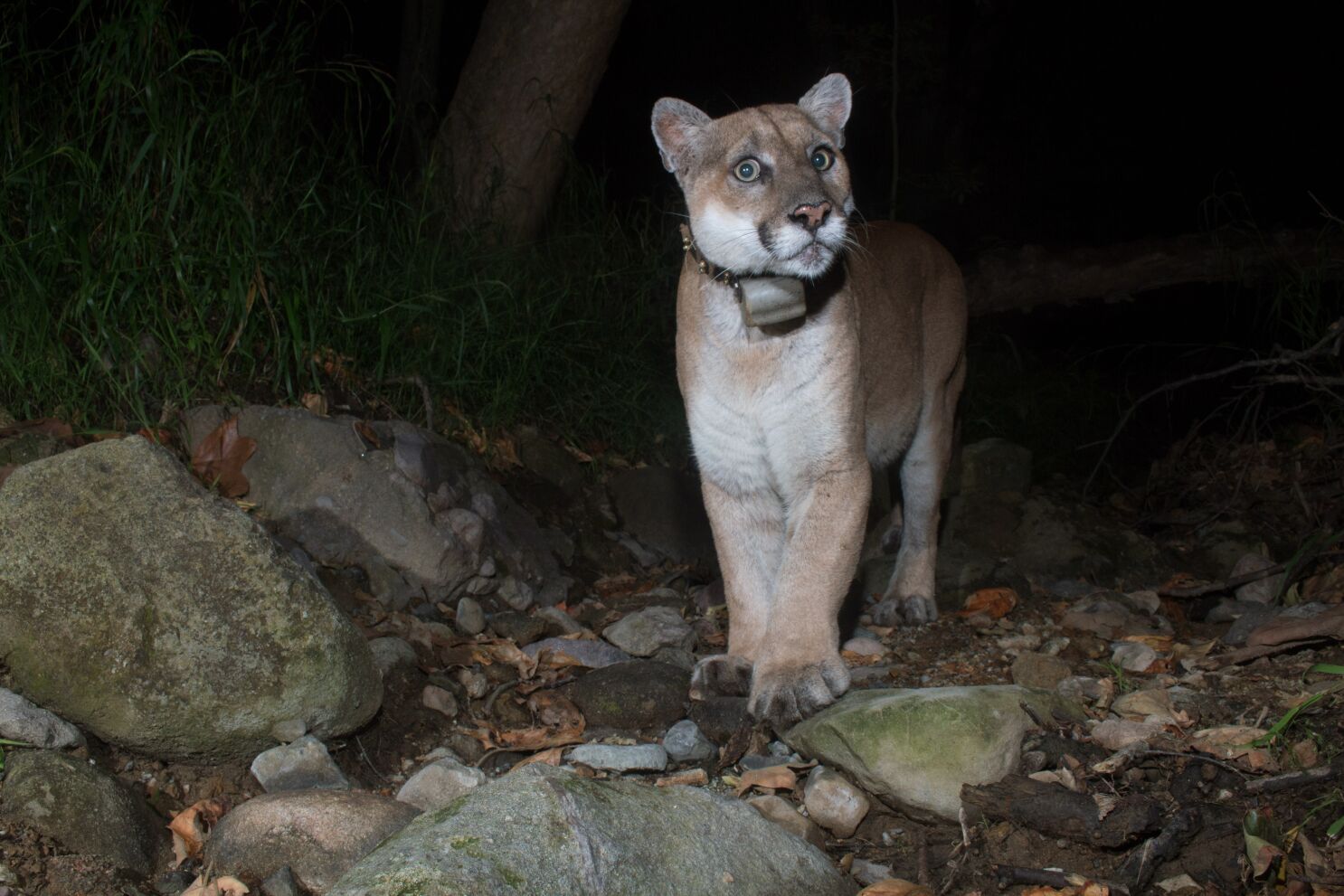The cougars were here first; we just built our cities around them. That American cougars are now mostly limited to west of the Rockies just means we made the rest of the country unlivable for them so it could be livable for us. That they tend to be limited to Los Angeles's isolated mountains and parkland means they don't want any trouble; they just want to live their cougar lives and avoid humans. It's an arrangement that more or less works for both sides, until it doesn't. It stopped working for P-22—or more accurately, it stopped working for us.
P-22, first spotted a decade ago, is Los Angeles's most famous mountain lion—not a title without competition, since L.A. is just one of two global megacities, along with Mumbai, to have big cats living within city limits. Maybe 100 of them live in the Santa Monica mountains, mostly hunting mule deer, but occasionally they'll pull up stakes and cross freeways and try to make it in the big city. P-22 was one such cougar, and by the time he was photographed in front of Griffith Park's famous Hollywood Sign in 2013, he was a bona fide celebrity cat.
Cougars live about 10 years in the wild, but P-22, believed to be 13 or 14 years old, has thrived in the absence of competition; other mountain lions likely would have killed him and taken over his territory by now. As it is, his territory isn't much: eight square miles, the smallest of any known cougar, compared to a typical 150 square miles for most males. But he's made do in Griffith Park, the largest municipal park containing urban wilderness area in the entire country, with occasional nighttime forays down into surrounding neighborhoods.
The problem is, those forays have been getting less occasional. Last month, P-22 killed a small dog on a leash in the residential Hollywood Hills neighborhood. Two weeks ago, he attacked a second chihuahua in Silver Lake, before being fought off by the dog's owner. A cougar shouldn't be doing this; it shouldn't want to come anywhere near that close to humans. Something is wrong with P-22.
“P-22 is a remarkably old cat in the wild and, after being deemed responsible for killing a leashed pet last month, may be exhibiting signs of distress,” the California Department of Fish and Wildlife said. “As P-22 has aged, however, the challenges associated with living on an island of habitat seem to be increasing and scientists are noting a recent change in his behavior.”
Simply put, P-22 may have become too old or too unwell to hunt, and desperate enough that a dog on a leash becomes an appealing target. This is an unsustainable and dangerous situation, for both local dogs and the cougar himself. So last week, wildlife officials announced their plans to capture P-22. It wasn't going to be easy—he's tagged, but his tag only sends out one ping per day and hourly pings at night.
“You have to be in the right place at the right time, and mountain lions can travel up to 25 miles in a day,” Beth Pratt, the National Wildlife Federation’s regional executive director for California, told the L.A. Times. More to the point: Cougars don't want to be found. They're ambush hunters, so even when hungry, they stay in hiding.
Officials also acknowledged that the search for P-22 would be complicated by L.A.'s unique topography—they would not use the typical tactic of trying to tree the cat, for fear that he would run onto a freeway. “We don’t want the O.J. chase happening with P-22,” Pratt said.
The search was expected to take weeks, but on Monday, in Los Feliz, they got him:
P22 was captured in our backyard. Some animal control guys told us there’s a lion in your yard. They tranquilized him and took him to LA Zoo for observation. Quite a day! pic.twitter.com/syS1kItznI
— Friend of P22 (@OgilvySimple) December 12, 2022
The homeowner, Sarah Picchi, told KTLA that she learned P-22 was in her backyard when wildlife officials showed up to her gate at around 10:30 a.m.
“I thought she said she was from a wildlife conservancy group raising money and so I just said, ‘I am sorry…this isn’t a good time. I’m on a work call,’ and she said, ‘No. I’m from wildlife. You have a lion in your backyard,” Picchi said.
[...]
“Such an L.A. moment. It’s way better than, like…the finale of White Lotus was so disappointing, but today kind of made up for it,” Picchi said.
KTLA
P-22 had been in Picchi's backyard since at least the day before, allowing officials to locate his tracker. That's atypical for a mountain lion, which are usually always on the move, and probably not a great sign. But Picchi said wildlife officials said P-22 appeared healthy. They darted him with a sedative and carted him off to the L.A. Zoo for evaluation.
Tim Daly, a spokesperson for Fish and Wildlife, told LAMag that two options, assuming P-22 is healthy enough, are to release him back into the wild—perhaps far from Griffith Park so he's no longer tempted by those plump little chihuahuas in the foothills—or sending him into retirement at a big cat sanctuary. “It is not our intention to euthanize P-22,” Daly said.
It better not be! P-22 has spent his life in an isolated range far smaller than any big cat should have, and he has done so alone, with no hope of finding a mate. For more than a decade he has kept to himself, the model of urban wildlife: getting by as best he can, in an environment he wasn't designed for, and bothering nobody. He's a survivor, and a legend. He deserves every chance to live out the rest of his life in cougar comfort.






